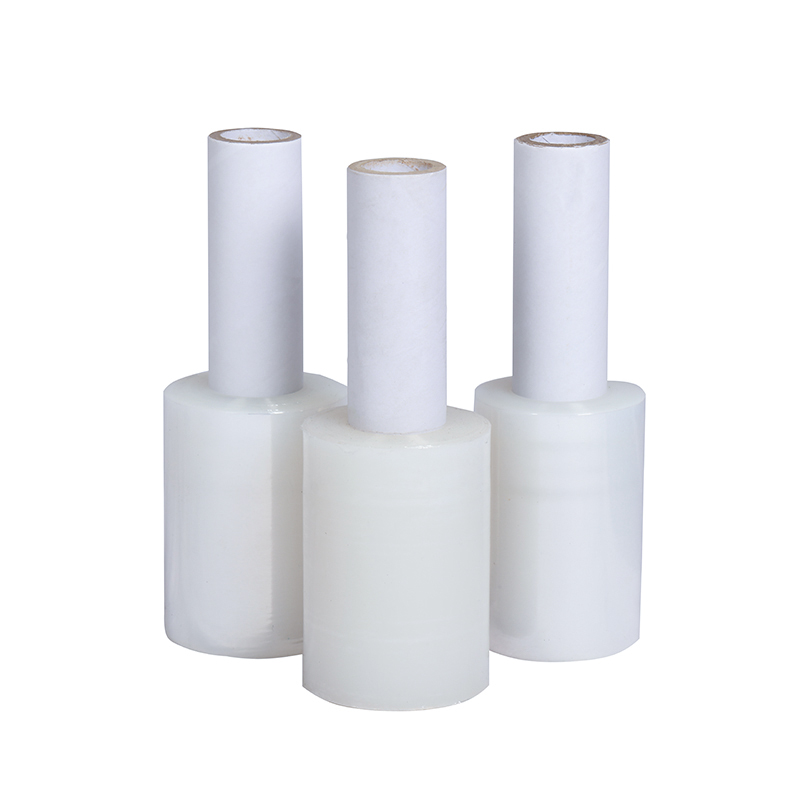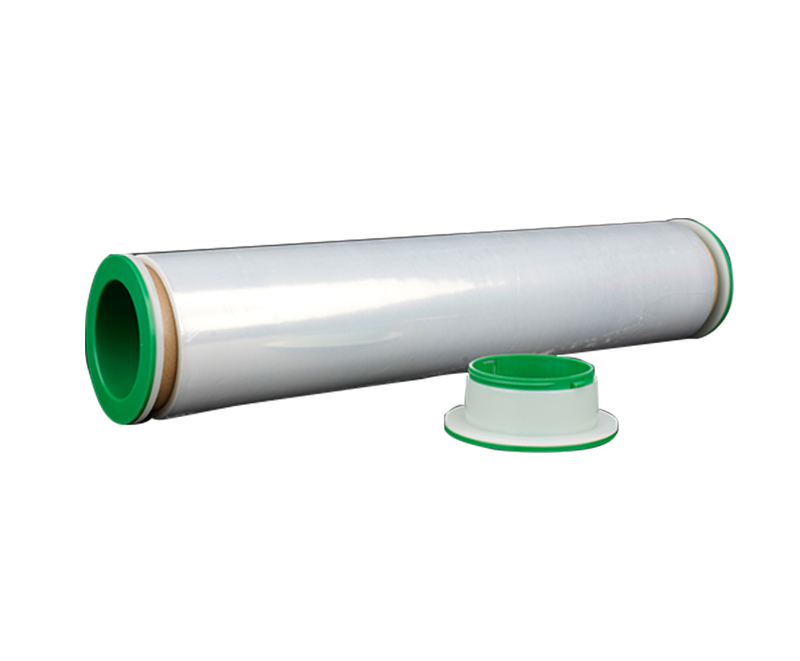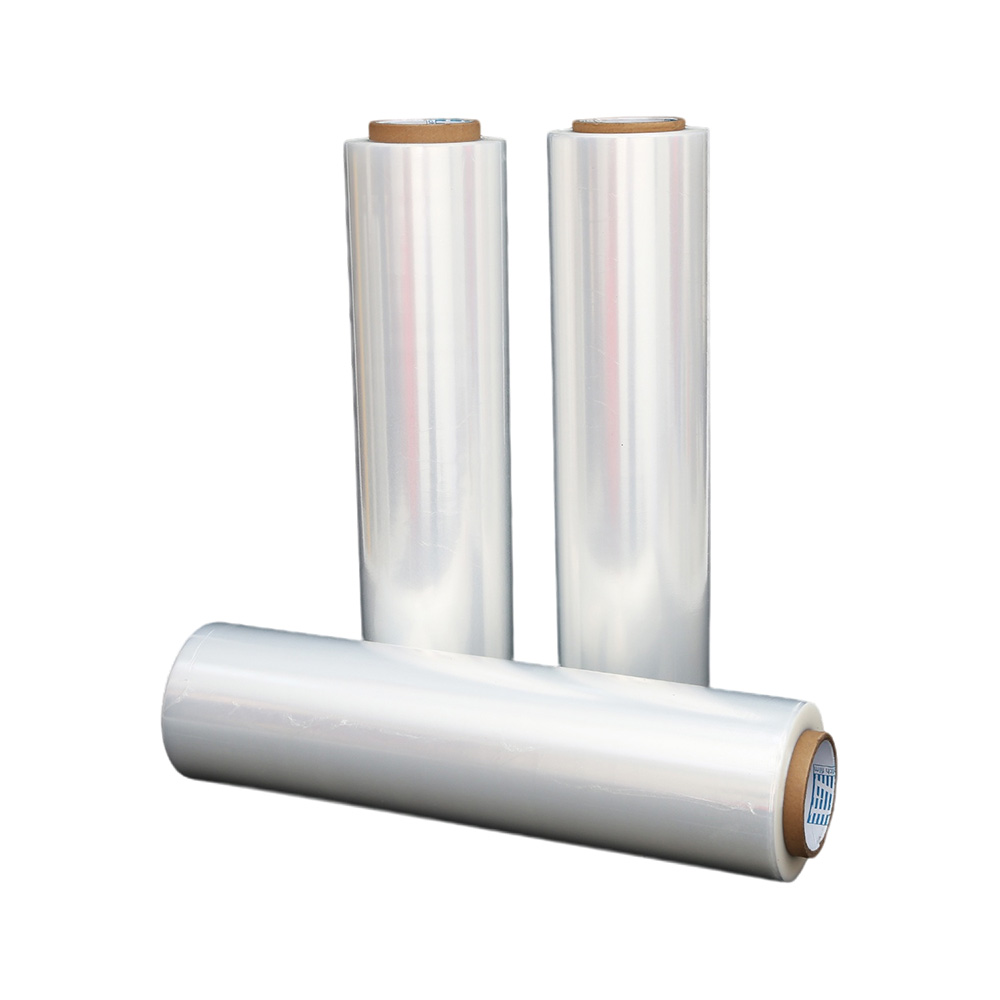How can printed stretch film technology improve supply chain
Source:How can printed stretch film technology improve supply chainTime:2023-08-18Visitors:
Enhancing Supply Chain Traceability and Load Stability with Printed Stretch Film
In the modern landscape of logistics and transportation, the role of the printed stretch film has evolved beyond its traditional function of safeguarding goods during transit. This versatile material, produced by stretch film manufacturers at their factories, now plays a pivotal role in enhancing supply chain traceability and load stability, two critical aspects of successful and efficient supply chain operations.The Role of Printed Stretch Film in Supply Chain Operations
Before delving into the innovative applications of printed stretch film, it's essential to grasp its fundamental role in supply chain operations. Packing stretch wrap is extensively used to secure and stabilize loads, preventing damage and losses during transportation. However, technological advancements have pushed the boundaries of what printed stretch films can achieve.Enhancing Supply Chain Traceability with Printed Stretch Film
Supply chain traceability has become a cornerstone of modern business practices, allowing companies to monitor the movement and location of goods at every stage of the journey. Incorporating unique identifiers, QR codes, or barcodes on printed stretch film opens up new dimensions of traceability. As packages are wrapped, these identifiers provide real-time data that can be integrated into existing tracking systems, granting stakeholders complete visibility into the supply chain.Ensuring Load Stability through Advanced Stretch Film Technology
While enhancing traceability is crucial, it's equally essential to maintain load stability during transportation. This is where the advancements in printed stretch film technology come into play. Modern stretch film manufacturers are incorporating innovative materials and formulations at their stretch film factories to create stretch films that secure the load and adapt to varying load shapes and sizes.Incorporating cling additives and multi-layer formulations has significantly improved the ability of printed stretch film to adhere tightly to the goods, preventing any movement or shifting during transit. This is particularly beneficial for delicate or irregularly shaped items susceptible to displacement within the packaging.
Integration of Traceability and Stability Features in Printed Stretch Film
Its ability to seamlessly integrate traceability and load stability features sets the printed stretch film apart. Companies can now invest in customized printed stretch film that includes their branding and essential tracking information. As goods are wrapped and prepared for shipment, the printed stretch film carries crucial data that can be scanned and tracked throughout the supply chain journey.Imagine a scenario where a pallet of goods is wrapped in printed stretch film featuring a QR code. This QR code, when scanned, provides information about the product, its origin, destination, and expected delivery time. Moreover, the stretch film's advanced stability features ensure that the load remains intact and secure during transportation, minimizing the risk of damage.
Considerations for Choosing the Right Printed Stretch Film
Several essential factors must be remembered when considering the adoption of printed stretch film technology for your supply chain operations. While the benefits are clear, the solution's effectiveness hinges on making the right choices.Compatibility: Ensure the printed stretch film's tracking features are compatible with your existing supply chain management systems. Seamless integration of data is essential for real-time tracking.
Load Characteristics: Different types of goods have varying load stability requirements. Consider your products' weight, shape, and fragility when selecting the appropriate printed stretch film.
Environmental Conditions: Evaluate the conditions your goods will be exposed to during transportation. Extreme temperatures, humidity, or exposure to sunlight can affect the stability and readability of printed information.
Durability: Choose a printed stretch film that is durable enough to withstand the rigours of transportation and handling. The information published in the film should remain clear and legible throughout the journey.
Case Studies: Real-world Implementations
Several forward-thinking companies have already embraced printed stretch film technology to enhance their supply chain operations. One notable example is a multinational electronics corporation that integrated QR codes onto its printed stretch film. These QR codes allowed instant access to detailed product information, enabling efficient customs clearance and reducing transit delays.Another case involves a pharmaceutical company that utilized printed stretch film with unique identifiers. This ensured that the authenticity of the medicines could be verified at every checkpoint, reducing the risk of counterfeits entering the supply chain.
Considerations for Choosing the Right Printed Stretch Film
When considering the adoption of printed stretch film technology for your supply chain operations, several essential factors must be remembered. While the benefits are clear, the solution's effectiveness hinges on making the right choices.Compatibility: Ensure the printed stretch film's tracking features are compatible with your existing supply chain management systems. Seamless integration of data is essential for real-time tracking.
Load Characteristics: Different types of goods have varying load stability requirements. Consider your products' weight, shape, and fragility when selecting the appropriate printed stretch film.
Environmental Conditions: Evaluate the conditions your goods will be exposed to during transportation. Extreme temperatures, humidity, or exposure to sunlight can affect the stability and readability of printed information.
Durability: Choose a printed stretch film that is durable enough to withstand the rigours of transportation and handling. The information published in the film should remain clear and legible throughout the journey.
Case Studies: Real-world Implementations
Several forward-thinking companies have already embraced printed stretch film technology to enhance their supply chain operations. One notable example is a multinational electronics corporation that integrated QR codes onto its printed stretch film. These QR codes allowed instant access to detailed product information, enabling efficient customs clearance and reducing transit delays.Another case involves a pharmaceutical company that utilized printed stretch film with unique identifiers. This ensured that the authenticity of the medicines could be verified at every checkpoint, reducing the risk of counterfeits entering the supply chain.
Addressing Common Concerns and Questions
Considering incorporating printed stretch film into your supply chain strategy, it's natural to have questions and concerns. Let's address some of the common queries that arise:Q: Will the printed information fade or become illegible during transit? A: Modern printing technologies and durable materials ensure that the information remains intact and legible even in challenging environmental conditions.
Q: How does the printed stretch film compare in terms of cost? A: While there might be a slightly higher upfront cost, the long-term benefits of improved traceability, reduced losses, and enhanced customer satisfaction often outweigh the initial investment.
Q: Can I customize the printed stretch film to match my branding? A: Absolutely. Many manufacturers offer customization options, allowing you to incorporate your company's branding, logo, and specific design elements onto the stretch film.
Q: What if my existing tracking systems are incompatible with printed stretch film technology? A: Work closely with your stretch film supplier to ensure seamless integration. Many suppliers offer guidance and support to help you make the most of the technology.
Future Trends and Innovations
The journey of printed stretch film technology continues. As industries continue to evolve, so does the technology that supports them. Here are some exciting trends and innovations to watch out for:Innovative Packaging: Imagine a stretch film that goes beyond static QR codes. Innovative packaging might include sensors that provide real-time data on factors like temperature, humidity, and even shock during transit.
Recommended Products
Ranked in the same article
- how to use the stretch film technology to r
- How can we get detailed price list?
- Five common quality problems of PE protecti
- Plastic film degradation
- How to guarantee punctual shipment for our
- Gauge to Micron and Millimetre Conversion G
- What is the difference between stretch film
- Testing the permeability of stretch film
- Stretch film temperature requirements
- Electrical wire film VS electrostatic film
- Why insufficient transparency of stretch w
Latest news articles
- PE vs PVC Stretch Film: A Comprehensive Gui
- The Influence of Stretch Film Thickness on
- What is Stretch Film Used For?
- The use of pe stretch film
- Stretch Film Wrap: Exploring Its Advantages
- Factors That Affect the Stretching Function
- Testing the permeability of stretch film
- What Is Red Stretch Film and What Are Its B
- PE stretch film how to cut?
- Exploring the Versatility of PE Stretch Fil
- What Is the Difference Between Shrink Wrap



